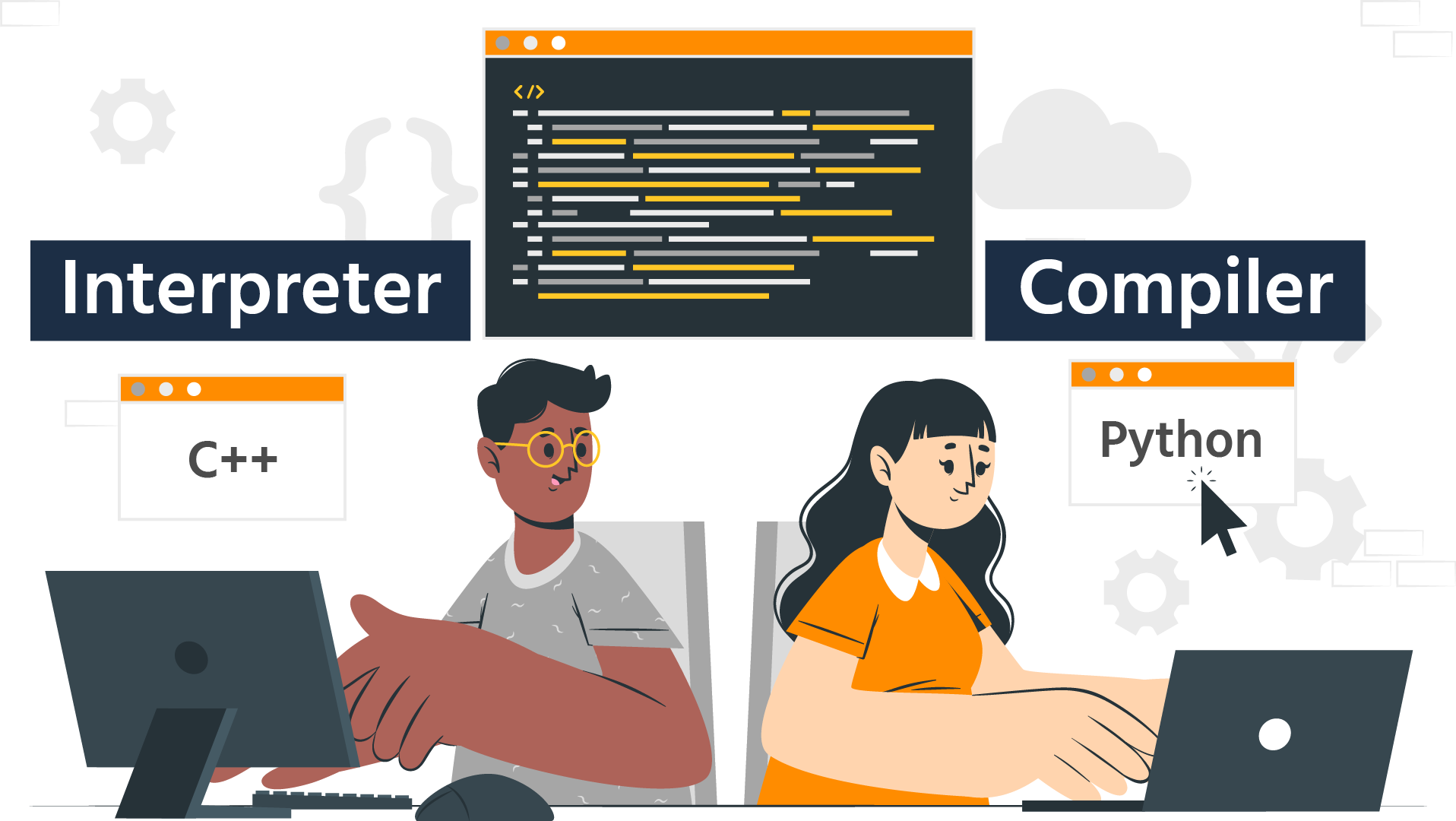Understanding how your code gets translated into executable instructions is a crucial step in becoming a better developer. Irrespective of whether you’re working with Java, Python, or any modern programming language, your code has to be transformed from human-readable text into something a machine can execute. This transformation is done through compilers and interpreters.
In this article, we’ll explore the fundamental concepts behind compilers and interpreters, their internal workings, and their key differences. We’ll also provide examples in Python and Java to help you visualize the process.
What Is a Compiler?
Sponsored
A compiler is a special program that translates code written in a high-level programming language (like Java or C++) into machine code or bytecode that can be executed by a computer. This process usually happens before the program is run.
Java Compilation Example
// HelloWorld.java
public class HelloWorld {
public static void main(String[] args) {
System.out.println("Hello, World!");
}
}To compile this program:
javac HelloWorld.javaThis creates a HelloWorld.class file containing Java bytecode. The Java Virtual Machine (JVM) then interprets or compiles this bytecode at runtime.
What Is an Interpreter?
An interpreter reads high-level source code and executes it line-by-line or statement-by-statement without producing an intermediate compiled file. Python, Ruby, and JavaScript are common interpreted languages.
Python Interpretation Example
# hello.py
print("Hello, World!")To run it:
python hello.pyHere, the Python interpreter reads each line and executes it immediately.
Key Differences Between Compiler and Interpreter
| Feature | Compiler | Interpreter |
|---|---|---|
| Translation Time | Translates code before running | Translates code at runtime |
| Output | Machine code / Bytecode | No output file |
| Speed | Faster execution | Slower execution |
| Error Detection | All errors at once | Stops at first error |
| Examples | Java (compiled to bytecode) | Python (interpreted) |
But this table only scratches the surface. Let’s explore how each works internally.
The Compilation Process in Depth
Compilers are not monolithic; they perform several steps to turn source code into machine code. These steps include:
- Lexical Analysis: The source code is broken into tokens.
- Syntax Analysis: Tokens are analyzed based on grammar rules to build a parse tree.
- Semantic Analysis: The compiler checks for semantic errors (like using a variable before declaration).
- Intermediate Code Generation: The compiler converts the syntax tree into an intermediate code.
- Optimization: Improves performance by removing redundant code.
- Code Generation: Generates machine code or bytecode.
- Code Linking and Assembly: Final linking with libraries and assembling of the machine code.
Java Compiler Internals (Simplified View)
int square(int n) {
return n * n;
}After compilation:
- Tokens:
int,square,(,int,n,),{,return,n,*,n,;,} - Syntax Tree: Representation of the function’s structure
- Bytecode: JVM-readable format
You can inspect the bytecode using:
javap -c HelloWorld.classThe Interpretation Process in Depth
An interpreter follows a slightly different route. It generally involves:
- Lexical Analysis: Same as compiler—splits code into tokens.
- Parsing: Checks syntax and builds a structure like an Abstract Syntax Tree (AST).
- Execution: Instead of generating machine code, the interpreter walks the AST and executes operations.
Python Interpreter Flow
def square(n):
return n * n
print(square(5))- Tokenized:
def,square,(,n,),:,return,n,*,n - Parsed: Function definition and call
- Executed directly by Python’s runtime environment
Python uses a bytecode interpreter internally. When you run a .py file, Python compiles it into bytecode (.pyc files), then executes that bytecode.
Hybrid Approaches
Languages like Java and Python blur the lines between compiling and interpreting. Java compiles source code into bytecode, which the JVM interprets or compiles further with a Just-In-Time (JIT) compiler. Python compiles code to bytecode too, but its primary execution mode is interpreted.
Java Execution Chain:
Java Source Code (.java) → Java Bytecode (.class) → JVM Interpreter / JIT Compiler → Native Machine CodePython Execution Chain:
Python Source Code (.py) → Python Bytecode (.pyc) → CPython Interpreter → ExecutionWhat Is JIT Compilation?
Just-In-Time (JIT) compilation is used by environments like the JVM and V8 (JavaScript engine). Instead of interpreting or compiling everything ahead of time, JIT compiles code while it’s being executed. This allows performance optimizations based on actual runtime behavior.
In Java:
- Frequently executed methods are compiled into native code during runtime.
- JVM then executes the compiled native code for performance.
Practical Use Cases and Performance
Compiler Use Case (Java):
- Applications requiring performance and stability
- Compile-time error checking
- More optimized code
Interpreter Use Case (Python):
- Rapid prototyping
- Scripting and automation
- Easier debugging
Java tends to be more performant in the long run due to compiled execution. Python’s flexibility and speed of development make it ideal for startups, scripts, and AI/ML experiments.
Compiler and Interpreter Design Concepts
Symbol Table: Stores variable/function declarations for semantic checking.
Error Handling: Compilers must collect as many errors as possible. Interpreters usually stop at the first error.
Garbage Collection: Managed environments like JVM or CPython use garbage collection to handle memory. The execution engine (compiler or interpreter) interfaces with this system.
Bootstrapping Compilers: Some compilers are written in the language they compile. For instance, the C compiler can be written in C itself—this is known as bootstrapping.
Tools and Resources to Explore
- Compiler Explorer: Visualize compiled output of code in different languages
- Javap: Java disassembler tool
- Python Dis: Disassembler for Python bytecode
Conclusion
Compilers and interpreters are foundational to how modern programming languages operate. While compilers transform code into fast, efficient executables, interpreters offer flexibility and simplicity. Java and Python represent two sides of this spectrum—compiled performance versus interpreted ease.
Understanding how each works helps you write better code, debug more effectively, and make smarter choices when choosing a language or optimizing performance.



